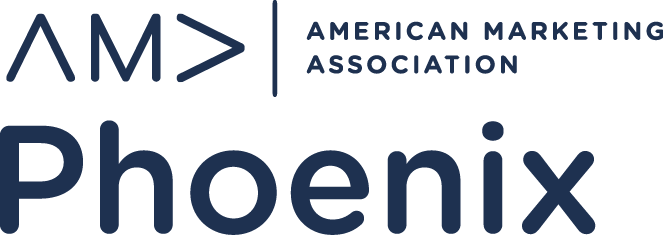- February 6, 2025
- Posted by: Featured
- Category: "Expert Roundups"

Measuring Personal Branding ROI: 12 Marketers Share their Methods
Discover the secrets to quantifying the success of personal branding strategies through expert-recommended methods. This article demystifies the process of measuring personal branding ROI, offering guidance from seasoned marketers. Learn actionable tips to track, analyze, and enhance your personal brand’s impact in the digital realm.
- Track Inbound Opportunities
- Measure Presentation Impact with QR Codes
- Focus on Revenue-Influenced Pipeline
- Monitor Coffee Chat Conversion Rate
- Evaluate Professional Engagement Metrics
- Analyze Earned Media Value and Search Volume
- Increase Client Engagement and Satisfaction
- Track Dollar Value of Deal Pipeline
- Monitor Inbound Opportunities
- Log Conversations and Opportunities
- Assess Client Quality Index
- Measure Lead Generation and Conversion Rates
Track Inbound Opportunities
A while back, I poured months into building my personal brand: blogging, guest posting, engaging in online communities, and optimizing my website. Yet, despite the effort, I felt like I was broadcasting into the void. No viral posts, no instant surge in traffic. Was it all just a vanity project?
That’s when I stopped measuring success by vanity metrics like page views and social shares. Instead, I focused on inbound opportunities, real moments when someone reached out because my name had stuck with them. I started tracking:
- How often someone said, “I read your blog and wanted to connect.”
- When prospects referenced my content during sales calls.
- The number of backlinks I earned organically from people citing my insights.
Three months in, I saw a shift. Sales calls weren’t cold anymore, prospects already knew, liked, and trusted me. My SEO rankings improved because other sites linked to my work. One high-ticket client admitted they’d been silently reading my content for months before finally reaching out.
The lesson? Personal branding ROI isn’t measured in instant likes; it’s measured in long-term trust. Forget chasing viral moments. Instead, track how often people recognize your expertise before you even pitch them. When your reputation does the selling for you, you’ve already won.
 Martynas Siuraitis
Martynas Siuraitis
SEO Consultant, The SEO Consultant Agency
Measure Presentation Impact with QR Codes
Whenever I give a presentation, I make sure to build a landing page specifically for that presentation, and then have a QR code at the end of my presentation that takes attendees to that landing page. The landing page itself has helpful resources, so it isn’t just for my tracking!
By using unique QR codes in every presentation and building audiences in GA4 of people who came to the site via those QR codes, I can see the impact each presentation had on our website traffic, not just from the presentation itself, but over the long term—do these people come back again? Do they sign up for our newsletter? Do they buy a course or book a workshop?
It can take months before someone takes action. However, by putting these simple tracking steps in place at the beginning, I’m more likely to be able to follow their buyer journey and accurately measure the ROI of my presentations.
 Dana Ditomaso
Dana Ditomaso
Founder & Lead Instructor, Kick Point Playbook
Focus on Revenue-Influenced Pipeline
Personal branding isn’t just vanity metrics; it’s about tangible impact. If you’re not tying it to business outcomes, you’re just making noise.
One killer metric? “Revenue-Influenced Pipeline.” Track how many deals, partnerships, or job opportunities can be traced back to your content, speaking gigs, or LinkedIn presence.
Here’s how:
- UTM Everything – If you’re pushing out content, speaking at events, or guesting on podcasts, slap UTM codes on your links and see what converts.
- Dark Social & DM Intel – Pay attention to inbound messages: “Saw your post, let’s chat” is a revenue signal. Tag these leads in your CRM.
- Network Velocity – Measure the rate at which your audience grows organically—engagement is a vanity metric if it’s not translating to real-world influence.
Personal branding should be a profit center, not a “nice-to-have.” If your content isn’t driving business, you’re just another talking head.
 Alena Astravukh
Alena Astravukh
CMO, Elemup
Monitor Coffee Chat Conversion Rate
When I first started focusing on personal branding, I got caught up in all those flashy vanity metrics—you know, follower counts, likes, the whole social media circus! But after a few months of having “great engagement” that wasn’t actually leading to business growth, I had to get real about what actually mattered.
So I started tracking what I call my “coffee chat conversion rate”—basically, how many meaningful conversations my content sparks that turn into actual business relationships or opportunities. Instead of obsessing over post reach, I now focus on tracking how many people reach out for deeper conversations after engaging with my content, and more importantly, how many of those conversations turn into partnerships, clients, or collaborations.
The real magic happened when I started treating my personal brand like a relationship-building tool rather than a broadcasting platform—suddenly those metrics became stories of real connections rather than just numbers on a dashboard. One of my favorite ways to measure this is through what I call “depth of conversation”—are people just saying “great post!” or are they sharing their own experiences and insights, creating those meaningful discussions that actually drive business value? These genuine interactions have become my north star for measuring personal branding ROI, and they’ve led to so much more value than chasing viral moments ever did.
 Tim Hanson
Tim Hanson
Chief Marketing Officer, Penfriend
Evaluate Professional Engagement Metrics
To measure the ROI of my branding efforts as a marketer, I focus on tracking engagement metrics on professional platforms like LinkedIn. Metrics such as profile views, post interactions, and connection requests provide insights into how effectively my content resonates with my target audience.
One specific method I use is monitoring the number of inbound opportunities generated through my brand, such as speaking engagements, consulting inquiries, or collaboration requests. By comparing the effort I invest in content creation and networking to the tangible opportunities that result, I can evaluate the impact of my branding on my professional growth and visibility.
 Sandra Stoughton
Sandra Stoughton
Director, Marketing Operations, TruBridge
Analyze Earned Media Value and Search Volume
We measure the ROI of personal branding efforts by tracking earned media value (EMV) and brand search volume, two key indicators of authority and visibility growth. Unlike vanity metrics like follower count, these data points quantify the real impact of PR, thought leadership, and digital presence.
One of the most valuable metrics we use is brand search volume—how often people search for our name, business, or key executives on Google. An increase in branded search indicates that our media coverage, interviews, and content strategy are organically building recognition and demand.
Additionally, we analyze earned media value (EMV) to measure how much our media placements would have cost if we had paid for equivalent advertising space. This helps us determine the financial impact of PR-driven personal branding efforts, ensuring that our strategy drives both credibility and long-term business value. Focusing on brand awareness, lead generation from media exposure, and engagement metrics, we ensure that personal branding isn’t just about visibility—it’s about measurable business growth.
 Kristin Marquet
Kristin Marquet
Founder & Creative Director, Marquet Media
Increase Client Engagement and Satisfaction
In measuring the ROI of my personal branding efforts as a marketer, I’ve found that tracking the influence on tangible business outcomes is key. One metric I focus on is the increase in client engagement and satisfaction. After positioning myself as a thought leader through keynotes and workshops, we saw a 30% rise in renewal rates and client referrals. This isn’t just about brand visibility; it’s translating impact into real client loyalty.
Additionally, I analyze the effectiveness of my personal brand in attracting top-tier talent. Following my talks at industry events, we’ve noticed an uptick in applications from experienced marketers planning to join us. This ensures our internal team remains strong and matches our brand promise to clients, directly impacting growth and client retention. By aligning my personal branding with these measurable growth indicators, I can clearly see the impact of my efforts.
 Harps Mangat
Harps Mangat
Founder & CMO, One Rawr
Track Dollar Value of Deal Pipeline
One of the most effective ways I measure the ROI of my personal branding efforts is by tracking the dollar value of deal pipeline generated each month.
Many marketers focus on leads, but not all leads translate into real opportunities. A lead only matters if it falls within the ideal customer profile (ICP), has a clear need for your services, and is actively considering a purchase.
If there’s no deal, there’s no real opportunity. So I don’t measure success by vanity metrics like follower count or engagement alone.
Instead, I focus on how much revenue potential my brand is driving. The stronger my personal brand, the more inbound opportunities I attract, leading to a healthier pipeline and tangible business growth.
 Nirmal Gyanwali
Nirmal Gyanwali
Founder & CMO, WP Creative
Monitor Inbound Opportunities
One of the best ways I measure the ROI of my personal branding? Tracking inbound opportunities. When my brand is working, I don’t have to chase clients—they come to me. I measure how many speaking gigs, podcast invites, collaborations, and high-quality leads come because of my content, not cold outreach. Using a customGPT, I streamline content creation while keeping my voice and values intact, saving 70% of the time I used to spend. More consistency = more visibility = more inbound opportunities. And when the right people start reaching out instead of me chasing them? That’s when I know my personal brand is doing its job.
 Laurel Robbins
Laurel Robbins
Founder, Bold Peak Marketing
Log Conversations and Opportunities
My biggest surprise about personal branding? You can actually measure it—though not how you might think. Looking at my LinkedIn analytics last quarter made me question everything I thought I knew about engagement. You know how people say post three times a week? Well, my most valuable connection came from a random spreadsheet I shared about virtual event costs that sat there for two weeks with barely any likes.
That spreadsheet thing still puzzles me. I posted it after spending hours comparing platform pricing (spreadsheets are my therapy, don’t judge). My usual posts about event planning got decent traffic, but this nerdy cost breakdown? Some tech company CEO referenced it in an email asking about consulting work. Plus, the same document helped me land a speaking spot—apparently Excel screenshots make great presentation material.
I’ve gotten pickier about tracking what actually generates conversations and opportunities. That perfect-looking post with hundreds of likes? Zero leads. But the detailed response I wrote in a comment thread about hybrid event budgets? That sparked three serious business discussions. Still figuring out the pattern there.
Everything gets logged now—post type, responses, resulting conversations. Sometimes the data contradicts everything I assumed about engagement. My professional opinion? Stop counting likes. Start counting how many times your content sparks a real business discussion. Though maybe take my advice with a grain of salt—I’m still testing this approach myself.
 Michelle Garrison
Michelle Garrison
Event Tech and AI Strategist, We & Goliath
Assess Client Quality Index
As a photographer, measuring the ROI of personal branding can feel as elusive as capturing the perfect golden hour shot. But over the years, I’ve found one metric that’s been incredibly insightful: the “client quality index.”
Let me explain. A few years back, I was struggling to quantify the impact of my personal brand. Sure, I had more followers and engagement, but how did that translate to actual business value? That’s when I developed this concept.
The client quality index is simple: I track the caliber of clients and projects I attract each quarter. I assign a score from 1-10 based on factors like budget, creative freedom, and alignment with my style. I compare this to a baseline from before I started actively building my personal brand.
For instance, when I first began my photography career, I might average a score of 4-5, mostly shooting local events and budget-conscious clients. Fast forward to today, after years of consistent portfolio updates, networking, and brand building, and that average has climbed to 8-9, with high-end corporate clients and exciting editorial work.
The beauty of this metric is that it captures the intangible benefits of personal branding. It’s not just about the number of gigs; it’s about the quality and satisfaction of the work I’m doing.
I remember the day I realized how powerful this was. I received an email from Marcus, an art director at a magazine I’d always admired. He’d been following my work for months and wanted to discuss a potential cover shoot. This wasn’t a cold outreach—he felt like he knew my style already through my personal brand. That single opportunity led to a cover feature and a long-term relationship with the publication.
Of course, not every high-scoring opportunity pans out, but the overall trend is clear. It’s like watching my photography evolve in real-time, with each project pushing me further creatively and professionally.
To track this, I use a simple spreadsheet. Each quarter, I log the clients, projects, and their scores. Over time, this data paints a clear picture of my personal brand’s growing influence in the photography world.
The client quality index has become my north star for personal branding ROI. It reminds me that every portfolio update, every behind-the-scenes Instagram story, every networking event is an investment in future opportunities. And in the world of photography, quality opportunities are what turn passion into a thriving career.
 John Lattanzio
John Lattanzio
Owner, John Angelo Photography
Measure Lead Generation and Conversion Rates
For me, measuring the ROI of personal branding efforts comes down to tracking how effectively it translates into tangible results. In my opinion, one of the best metrics is lead generation and conversion rates directly tied to my personal brand.
Here’s what I do: I monitor the number of inbound leads that mention my name specifically or reference my content, such as blog posts, social media, or interviews. These are clear indicators that my personal branding is resonating with the right audience. Then, I look at how many of those leads actually convert into clients or meaningful collaborations.
To track this, I rely on tools like CRM systems (we use Follow Up Boss on my team) to record the source of each lead and analyze the conversion rate over time. Additionally, I pay close attention to engagement metrics on platforms like LinkedIn or our website, things like direct messages, comments, and even shares of my expert insights. These interactions show that my branding efforts are building trust and authority in the market.
 Adam Chahl
Adam Chahl
Owner / Realtor / Interior Designer, Vancouver Home Search | Place Real Estate Team | Oakwyn Realty | Vancouver, BC REALTOR
